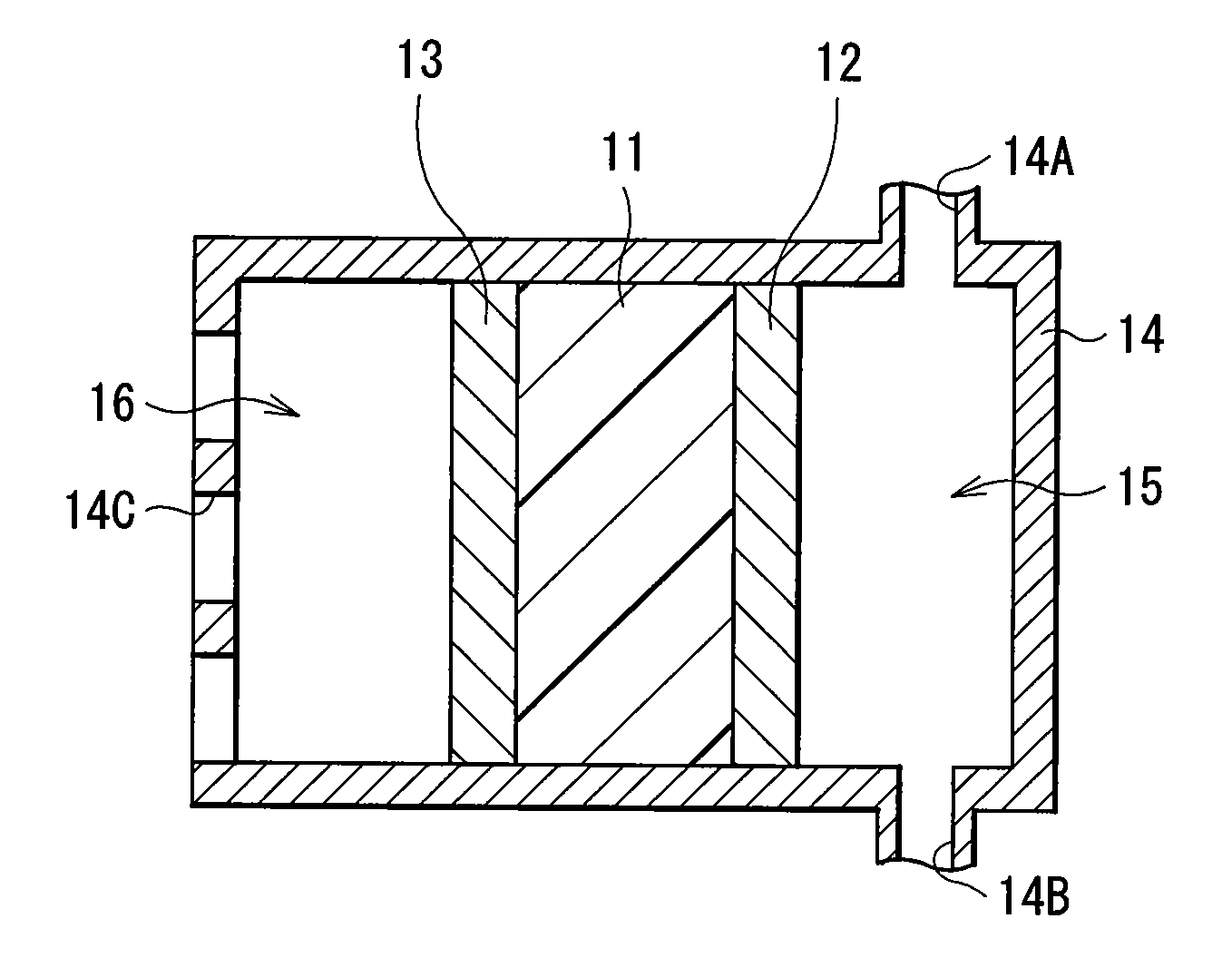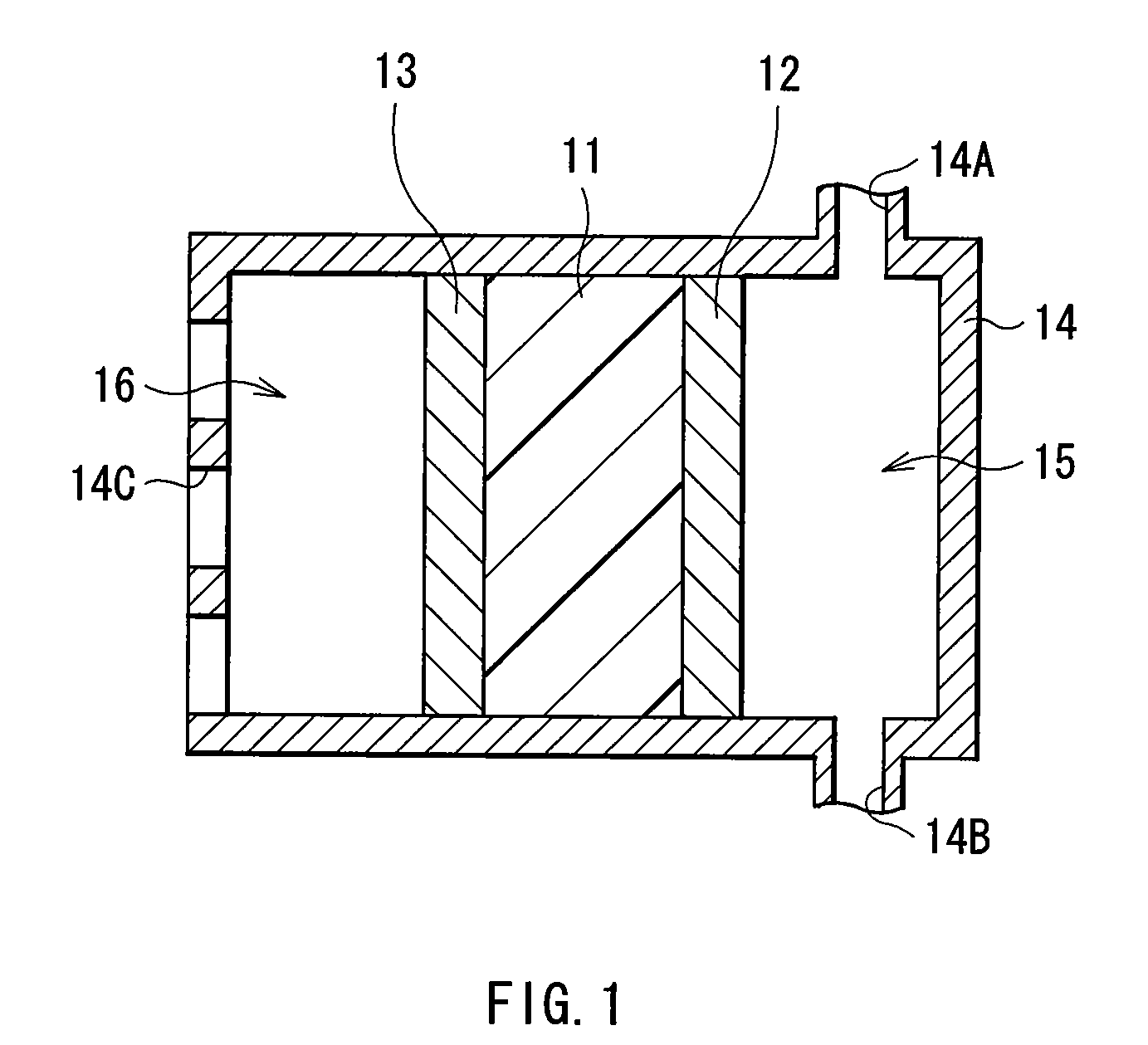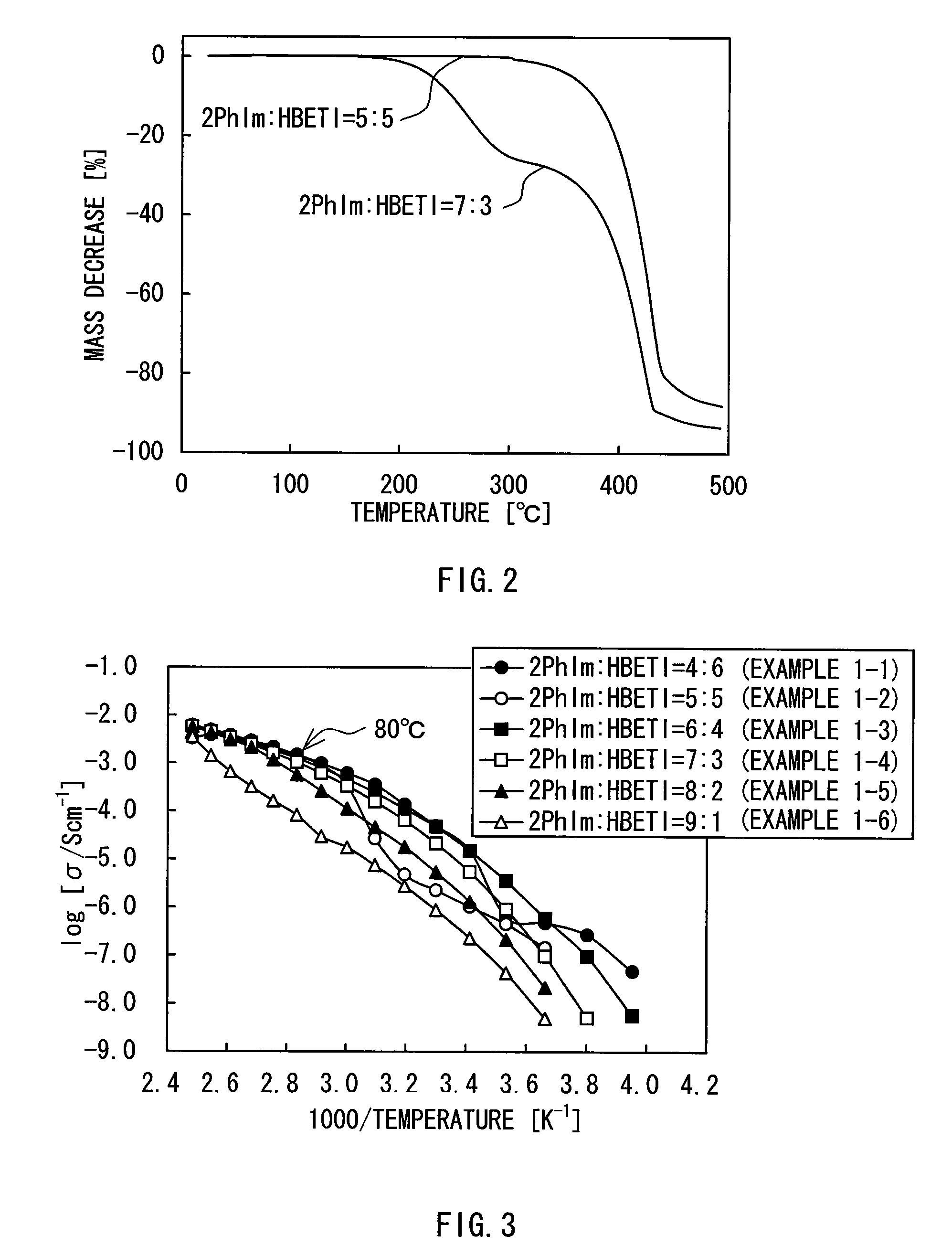Mixture, cation conductor and electrochemical device using those
a technology of cation conductors and mixing, applied in the field of mixing and cation conductors, can solve the problems of large system as a whole, high facility costs or operation costs, and inability to use the region at equal or higher boiling point, so as to reduce water solubility and reduce the effect of cation conductivity
- Summary
- Abstract
- Description
- Claims
- Application Information
AI Technical Summary
Benefits of technology
Problems solved by technology
Method used
Image
Examples
examples
[0070] Further, concrete examples of the invention will be described in detail.
examples 1-1 to 1-6
[0071] The mixture described in the embodiment was formed. As the first compound, 2-phenylimidazole (hereinafter referred to as “2PhIm”) expressed in Chemical formula 21 was used. As the second compound, pentafluoroethanesulfonimido (hereinafter referred to as “HBETI”) expressed in Chemical formula 26 was used. In Examples 1-1 to 1-6, a mole ratio in the mixture between 2PhIm and HBETI was changed as 2PhIm:HBETI=4:6, 5:5, 6:4, 7:3, 8:2, or 9:1. Specifically, relative to 1.524 g (4.00 mmol) of HBETI, 2PhIm was mixed at a rate of 0.3842 g (2.66 mmol) in Example 1-1, 0.5763 g (4.00 mmol) in Example 1-2, 0.8644 g (6.00 mmol) in Example 1-3, 1.345 g (9.34 mmol) in Example 1-4, 2.305 g (16.0 mmol) in Example 1-5, and 5.187 g (36.0 mmol) in Example 1-6. This mixing was performed in a glove box under the argon (Ar) atmosphere at a moisture concentration of 10 ppm or less, at 150° C. equal to or higher than the melting point of 2PhIm (136° C.) for 5 min. The operation was performed three tim...
examples 2-1 and 2-2
[0077] Mixtures were formed as in Examples 1-2 and 1-4, except that 4-phenylimidazole (hereinafter referred to as “4PhIm”) was used as the first compound. After that, as in Examples 1-2 and 1-4, melting points and glass transition temperatures were measured by DSC measurement, and water solubility and ion conductivity by AC impedance measurement were examined. Results thereof are shown in Table 2 and FIG. 4. In FIG. 4, the results of Examples 1-2 and 1-4 are also shown.
TABLE 2FirstSecondMixingMeltingWatercompoundcompoundratiopointsolubilityExample4PhImHBETI5:588° C.Not2-1dissolvedExample7:385° C.Not2-2dissolved
[0078] As shown in Table 2, it was found that the melting points of the respective mixtures were decreased down to the level lower than the melting point of 4PhIm (129° C.). Further, it was found that these mixtures were not dissolved in water. Further, as shown in FIG. 4, it was found that ion conductivity equal to of Examples 1-2 and 1-4 were shown at 110° C. or more. That...
PUM
| Property | Measurement | Unit |
|---|---|---|
| temperatures | aaaaa | aaaaa |
| pressure | aaaaa | aaaaa |
| temperature | aaaaa | aaaaa |
Abstract
Description
Claims
Application Information
 Login to View More
Login to View More - R&D
- Intellectual Property
- Life Sciences
- Materials
- Tech Scout
- Unparalleled Data Quality
- Higher Quality Content
- 60% Fewer Hallucinations
Browse by: Latest US Patents, China's latest patents, Technical Efficacy Thesaurus, Application Domain, Technology Topic, Popular Technical Reports.
© 2025 PatSnap. All rights reserved.Legal|Privacy policy|Modern Slavery Act Transparency Statement|Sitemap|About US| Contact US: help@patsnap.com



